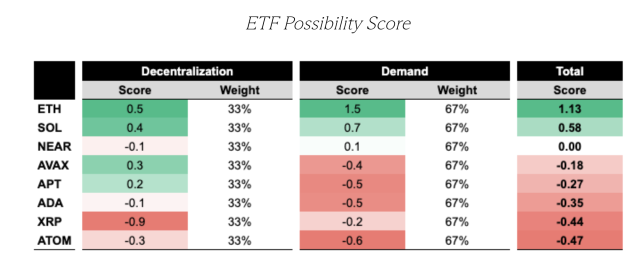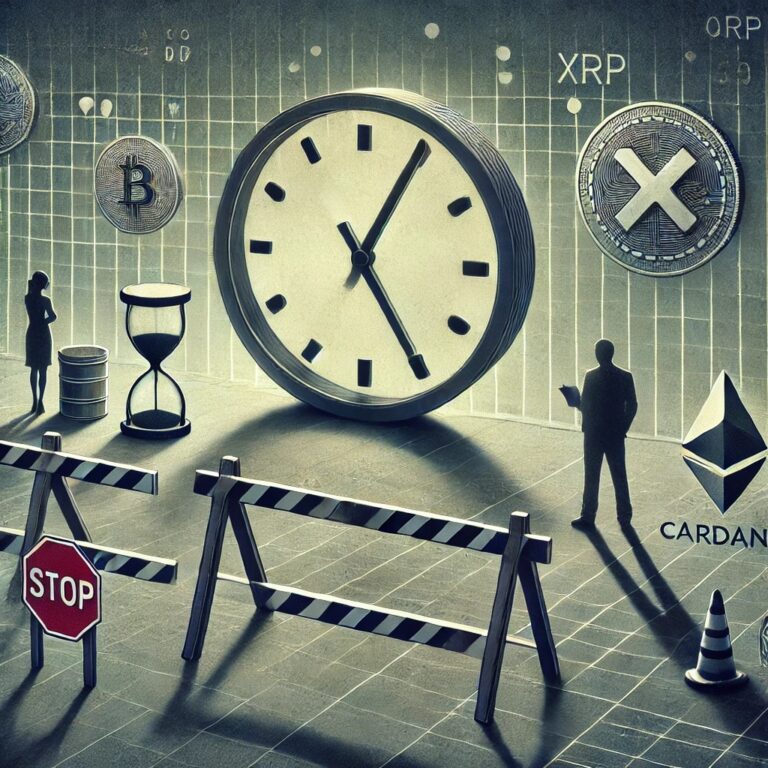The sphere of cryptocurrency ETFs seems to be increasing in the intervening time, however not all digital belongings are prepared to simply transition to this monetary product. GSR’s latest evaluation of the potential for ETFs of varied cryptocurrencies has offered some insights, placing XRP and Cardano in a difficult place for ETF adaptation.
GSR makes use of a complete scoring system that mixes decentralization indicators and market demand indicators to judge cryptocurrencies.
XRP and Caradano: Will ETFs By no means See the Gentle of Day?
Decentralization is important and points resembling permissionless participation and the variety of {hardware} used within the community should be examined.
Key indicators such because the Satoshi coefficient measure the focus of operational energy inside a community and reveal vulnerabilities in potential collusion or management by a number of entities.
For XRP and Cardano, the decentralization scores are considerably decrease, with XRP at -0.9 and Cardano at -0.1, exhibiting issues in regards to the construction of their networks.

Along with decentralization, demand potential is equally essential contemplating market capitalization, transaction quantity, and neighborhood exercise ranges. These components can predict how a lot curiosity there could be in ETFs primarily based on every cryptocurrency.
Regardless of their recognition, XRP and Cardano have demand indicator scores of -0.2 and -0.5, which places them behind different cryptocurrencies that present stronger indicators of future market demand.

The decrease decentralization and demand scores within the GSR evaluation counsel that XRP and Cardano could face vital obstacles earlier than launching an ETF, particularly in a market that’s adapting and evolving quickly.
In the meantime, opposite to the gloomy outlook for XRP and Cardano ETFs within the GSR report, different cryptocurrencies resembling Ethereum, Solana, and NEAR have extra optimistic assessments.
Highlight on Solana and different authorized ETFs
Notably, when mixed with asset assessments, GSR’s ETF Probability Scoring methodology assigns a 33% weight to decentralization and a 67% weight to demand in its total scoring system.

Regardless, VanEck, a serious participant within the asset administration area, has taken the groundbreaking step of making use of for the primary spot Solana ETF with the U.S. Securities and Alternate Fee (SEC).
The transfer highlights Solana’s rising standing as a distinguished competitor to Ethereum. “With its mixture of scalability, pace and low value, the Solana blockchain has the potential to ship an enhanced person expertise throughout a wide range of use circumstances,” mentioned Matthew Sigel, director of digital asset analysis at VanEck.
Nonetheless, the outlook for Bitcoin and Ethereum stays blended. Whereas the Bitcoin spot ETF has seen risky inflows, the potential Ethereum ETF remains to be awaiting ultimate S-1 approval, which is anticipated to occur quickly.
The market’s response to those developments has been cautious, reflecting that regardless of the constructive traits seen in latest days, inflows into spot Bitcoin ETFs have remained gradual.
Featured pictures from DALL-E, charts from TradingView
